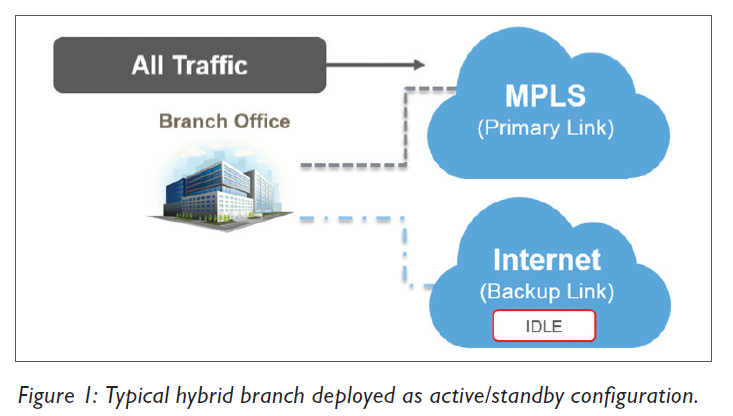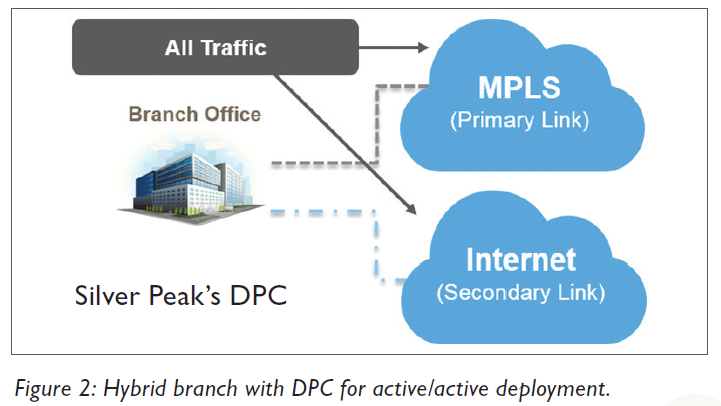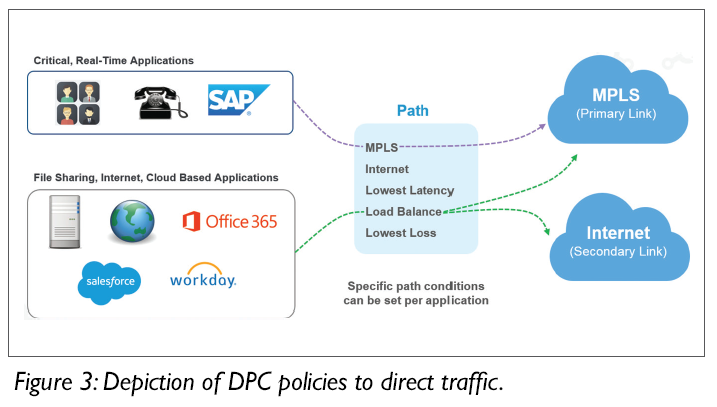Dynamic Path Control (DPC) is a key feature of all Silver Peak WAN products, including Unity EdgeConnect. DPC provides real-time traffic steering over any broadband or MPLS link based on company-defined business intent policies. In the event of an outage or brownout, DPC automatically fails-over to the secondary connection in less than one second.
Use All of Your Available Bandwidth
 DPC eliminates the active/standby configuration, improving the reliability and performance for branch office applications. The traffic engineering decision is made by DPC, not layer-three routing, intelligently routing or load balancing traffic across the available links. This allows what was a standby line to be brought online without the complexity of pure layer-three routing.
DPC eliminates the active/standby configuration, improving the reliability and performance for branch office applications. The traffic engineering decision is made by DPC, not layer-three routing, intelligently routing or load balancing traffic across the available links. This allows what was a standby line to be brought online without the complexity of pure layer-three routing.
Customers can create policies that help them make more intelligent decisions about how the WAN links are used and which path is used by each application. For example, a user can create policies that would route their most critical traffic such as VoIP, video conferencing and ERP traffic to always use the MPLS network, while the rest of the traffic is load balanced (see Figure 3).

Silver Peak Unity EdgeConnect was designed to allow these DPC configurations to be created in seconds, with simple point-and-click setup. Administrators can centrally manage how any application behaves across the enterprise WAN through the Unity Orchestrator management dashboard. There is no need to make any of these changes manually on a site-by-site basis.

Configuring Dynamic Path Control

Resources
-
This is a demonstration of Silver Peak Dynamic Path Control capabilities as part of an SD-WAN deployment. In this demonstration, we show a hybrid WAN environment with MPLS and Internet connectivity. The demo shows how different forms of traffic can be dynamically directed over each of the connections, and how Dynamic Path Control can load balance between the two links.
-
This data sheet highlights the features and capabilities of Silver Peak Unity EdgeConnect.
-
This white paper highlights Silver Peak's Dynamic Path Control (DPC), which gives organizations the ability to intelligently route applications over multiple WAN links, including the Internet. The white paper reviews a sample architecture, DPC configuration options, and monitoring.